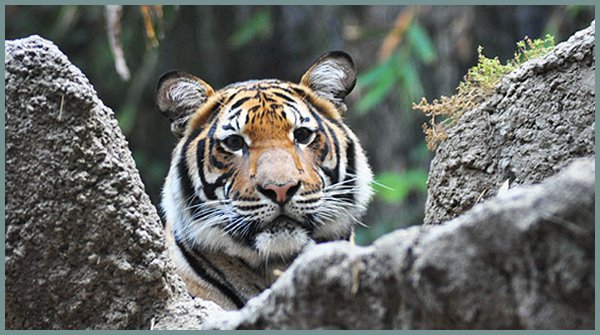
Imagine sitting down with a cup of coffee and diving into the captivating world of Indochinese tigers. You might be wondering what makes them unique, why their numbers are dwindling, or even if they really have the same stripes as Bengal tigers. In this article, we’ll bust some of those myths wide open and give you a clearer picture of these incredible animals.
Myth 1: Indochinese Tigers Are Just Smaller Versions of Other Tigers
One common misconception is that Indochinese tigers are merely smaller versions of their cousins, like the Bengal and Siberian tigers. While it’s true they are smaller, they also carry distinct features that set them apart. Think of them as the underdog of the tiger family—smaller but uniquely adapted to their environment.
Indochinese tigers typically weigh between 220 to 400 pounds and can grow up to 8.5 feet long, including their tail. Their fur is darker and more striped than that of other tiger species, providing excellent camouflage in the dense jungles of Southeast Asia. This adaptation is crucial for hunting, as they thrive in habitats where cover is essential for stalking prey. So while they might not be as big as some other tigers, calling them just “smaller” doesn’t do justice to their unique adaptations.
Myth 2: Indochinese Tigers Are All in Zoos
Another misconception is that all Indochinese tigers are confined to zoos or wildlife parks. While many of these beautiful creatures are indeed in captivity, the majority still roam the wild, albeit in limited numbers. The truth is, these tigers once had vast territories across Southeast Asia, including countries like Thailand, Vietnam, and Myanmar.
However, habitat loss and poaching have significantly reduced their wild populations. As of now, it’s estimated that fewer than 400 Indochinese tigers remain in the wild. Conservation efforts are ongoing, and organizations are working hard to create protected areas for these tigers to live and thrive. So yes, while some live in zoos, there’s still a wild spirit in a number of them, waiting to reclaim their rightful place in nature.
Myth 3: They Only Eat Large Prey
You might think that being a tiger means feasting only on large animals like deer or wild boar. Here’s the thing: Indochinese tigers are opportunistic hunters. While they do prefer larger prey, they’re not picky eaters. This flexibility is important for their survival, especially in areas where larger animals are scarce.
Indochinese tigers will also hunt smaller animals such as rabbits, birds, and even livestock if necessary. This diverse diet allows them to adapt to their environment. In a way, it’s like a buffet for them—they’ll take what they can find and make the most of it!
Myth 4: Indochinese Tigers Are Not Endangered
Some people mistakenly believe that the Indochinese tiger is not endangered, especially when compared to the critically endangered Sumatran tiger. Unfortunately, this couldn’t be further from the truth. The Indochinese tiger is classified as Endangered on the IUCN Red List, primarily due to habitat loss and poaching.
With their numbers dwindling, every effort counts. Conservationists are working tirelessly to protect their habitats, fight against poaching, and raise awareness about the plights these tigers face. So, it’s important to remember that Indochinese tigers need our help just as much as any other tiger species.
Myth 5: Indochinese Tigers Are Not Important to Ecosystems
Another common myth is that Indochinese tigers don’t play a significant role in their ecosystems. In reality, they are a crucial part of their habitat’s health. As apex predators, they regulate the populations of their prey. This helps maintain a balance in the ecosystem, ensuring that no single species overpopulates and damages the environment.
For example, by controlling the deer population, Indochinese tigers help promote forest growth. Fewer deer mean that vegetation has a chance to thrive, which in turn supports other wildlife. It’s a delicate balance—and without these tigers, that balance can be disrupted.
Myth 6: Indochinese Tigers Can Be Easily Trained
You might think these fierce big cats can be tamed or trained like dogs. Honestly, that’s a huge misconception. Tigers, including the Indochinese variety, are wild animals with instincts that can’t be easily overridden. While some trainers may be able to perform tricks for entertainment, this does not mean they’re domesticated.
Training a tiger often involves fear and coercion rather than genuine cooperation. In the wild, tigers are solitary hunters, relying on their instincts to survive. Trying to change their nature can lead to dangerous situations and misunderstandings. It’s best to admire these animals from a distance, respecting their wildness and natural behavior.
As we wrap up our chat about Indochinese tigers, it’s evident that many common myths can cloud our understanding of these incredible creatures. By clearing up misconceptions regarding their size, habitat, diet, and importance, we can appreciate the unique role they play in our world.
These tigers are more than just smaller versions of their cousins or mere attractions in zoos—they’re essential players in their ecosystems and deserving of our protection. Let’s keep the conversation going and support efforts to conserve Indochinese tigers, ensuring they thrive not just in captivity but in the wild, where they belong. After all, the future of these majestic creatures rests in our hands.
